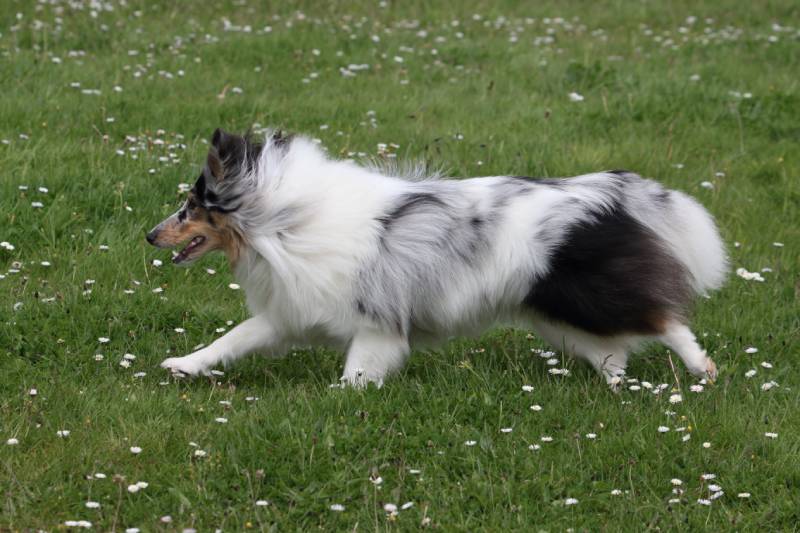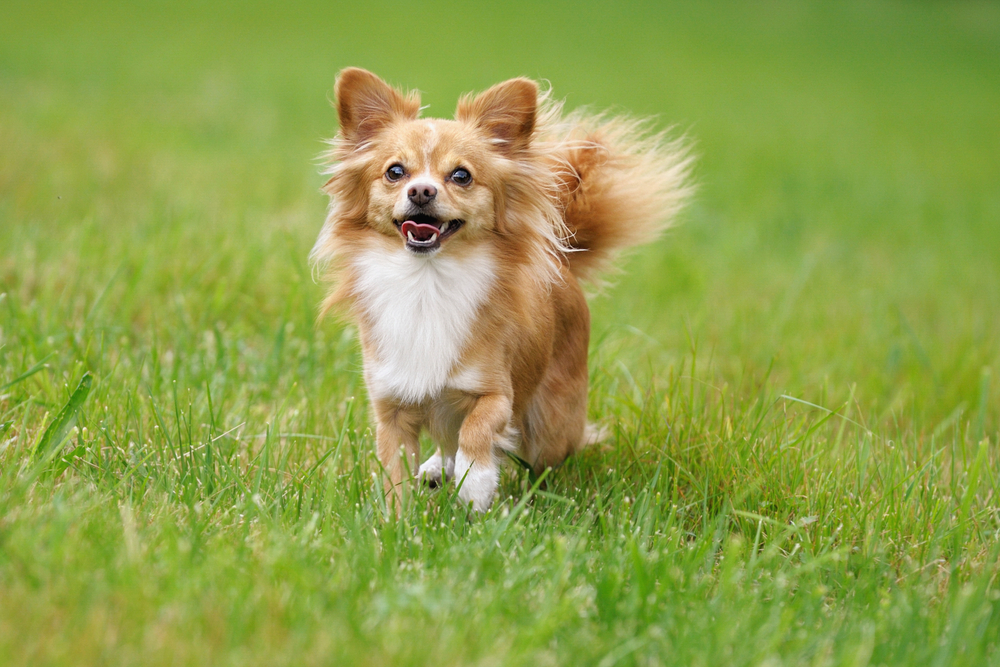Click to Skip Ahead
Some dog breeds commonly come in just a few colors, but this isn’t the case for the diversely-colored Sheltie (Shetland Sheepdog). Though there are so many color combination possibilities for this breed, they all have one thing in common: they’re sure to get heads turning everywhere.
Let’s take a closer look at some amazing Sheltie colors.

The 4 Blue Merle Combinations
Shelties come in three base colors that come with white or tan markings to create various combinations. Blue merle is one of these colors.
1. Blue Merle & White

Dogs with the Merle gene are gray (a result of the dilute gene) with patches of black, creating a marbled effect. In some breeds, Merle is called “dapple”. It’s also combined with tan and/or white. Shelties with blue Merle and white but no tan are sometimes called “bi-blue”.
2. Blue Merle White & Tan

Shelties with this color combination have both white and tan on their coats in addition to the black patches on a gray background. The degree of tan coloring can vary from dog to dog, but it’s commonly seen around the face and on the ears and legs.
3. White Blue Merle

Okay, so this is where it gets slightly confusing. You’re not alone if your first thought was “Isn’t that just the same as a blue Merle and white?”. It turns out, however, that there are also white-factored Shelties.
These dogs have normal coat colors, like blue Merle, but with a more significant proportion of white on the chest, legs, and collar. It’s also common for them to have a white stifle that starts on the hint leg and runs into the belly area.
4. White Blue Merle & Tan

As mentioned above, white-factored Shelties have the normal Sheltie coat colors but with larger areas of white. Therefore, you can get Shelties that are white-blue Merle with tan coloring, too. The tan color can range from barely noticeable to prominent.
The 4 Sable Combinations
In addition to blue Merle, sable is another base color for Shelties. The intensity of this color can range from a light biscuity shade to a darker mahogany shade, and the color sometimes darkens with age. In some shades, the black overlay is obvious.
1. Sable & White

Sable and white Shelties are simply sable-colored with white on the collar, chest, and legs. The head is sable-colored, sometimes with a white blaze connecting the top of the head to the muzzle (this can be present on other Sheltie colors, too). White blazes can change in appearance as a dog gets older.
2. Sable Merle & White

Shelties with sable Merle coloration have darker patches with a marbled effect, as is the case with blue Merle dogs. The dark patches are irregular and range in size from small and spot-like to large. White is also present. The only sable Merles that can be shown are brown-eyed ones—the AKC breed standard only permits blue eyes in blue Merles.
3. White & Sable

White-factored Shelties with sable coloration have a lot of white on their chests, legs, and collars and typically have white stifles leading from the hind leg to the belly.
4. White & Sable Merle

White-factored sable Shelties can also have the Merle pattern on their coats, which means that the dappled or marbled effect is present but with a large proportion of white on the chest, legs, and collar.

The 5 Black Combinations
The third base color for Shelties is black, which can be combined with white and tan in various ratios.
1. Black & White

Black and white Shelties don’t have any tan on their bodies, even in small amounts. They typically have black heads, backs, and hindquarters with white on the chest, legs, collar, and sometimes on the face in the form of a blaze. These Shelties are sometimes referred to as “bi-black”.
2. Black White & Tan

These Shelties are tri-colored, with black and white but also tan coloring. The largest proportion of the coat is black and white with smaller areas of tan “points” on the face, legs, and under the tail.
3. White & Black

Shelties with a large proportion of white on the legs, chest, and collar but also black in other areas are white-factored. These dogs also commonly have a white stifle, as is the case with white-factored Shelties in other colors.
4. White Black & Tan

White, black, and tan Shelties have white legs, chests, and collars with black and tan “points”. This is another example of the white factor at work.
5. Black & Tan

Black and tan Shelties have a large proportion of black on their bodies along with tan coloration. Not much is known about this color combination, so it’s unclear whether any white at all is or isn’t present on black and tan Shelties, but it is listed as an alternate AKC color.
White Shelties
1. White (Double Merle)
When two dogs with Merle genes are bred, it can result in a white (or double Merle) color, which is a dog with a mostly white coat. The breeding of two Merles together is strongly discouraged because double Merles are prone to various health conditions, including deafness and blindness.

Conclusion
The spunky Sheltie is a real mixed bag when it comes to coat color combinations, a fact that makes these dogs so eye-catching. Color aside, Shelties make affectionate, sensitive, intuitive, and fun-loving dogs for anyone willing to give them their heart and plenty of love in return.
If you’d like to share your life with a Sheltie, we recommend checking out local shelters or adoption websites (there are plenty of Sheltie rescues in the US) to see who is in need of a second chance.
Featured Image Credit: K E Walker, Shutterstock












